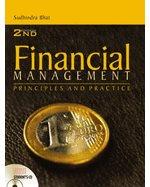Question
uploaded imageFrom the finance theory, the Capital Asset pricing Model postulates a relationship between the returns on a particular stock and the market return according
uploaded imageFrom the finance theory, the Capital Asset pricing Model postulates a relationship between the returns on a particular stock and the market return according to the following model: uploaded image An assets risk premium is the excess of its return over the risk-free rate, therefore this equation relates the risk premium of asset i to the risk premium on the market. Assets having risk premia that fluctuate less than one-for-one with the market are called defensive assets, and those whose risk premia fluctuate more than one-for-one with the market are called aggressive assets. 1. Use the data provided to you here above to estimate the CAPM model for Xerox, including an intercept. i.e. a model specified as follows: uploaded image 2. Is Xerox best described as a defensive, neutral, or aggressive stock? Is your conclusion statistically significant? (use a 5% significance level) 3. The CAPM suggests that securities having more systematic risk than the market should typically also earn a higher risk premium than the market, and vice versa. Considering your estimate of beta and your sample average risk premia, is it true for Xerox? 4. Are your slope and intercept estimates statistically significant (also at 5%)? What implication(s) can you make from your test conclusions? 5. From your regression results, what proportion of the total variability of the Xerox risk premium is attributable to systematic risk?
Step by Step Solution
There are 3 Steps involved in it
Step: 1

Get Instant Access to Expert-Tailored Solutions
See step-by-step solutions with expert insights and AI powered tools for academic success
Step: 2

Step: 3

Ace Your Homework with AI
Get the answers you need in no time with our AI-driven, step-by-step assistance
Get Started


